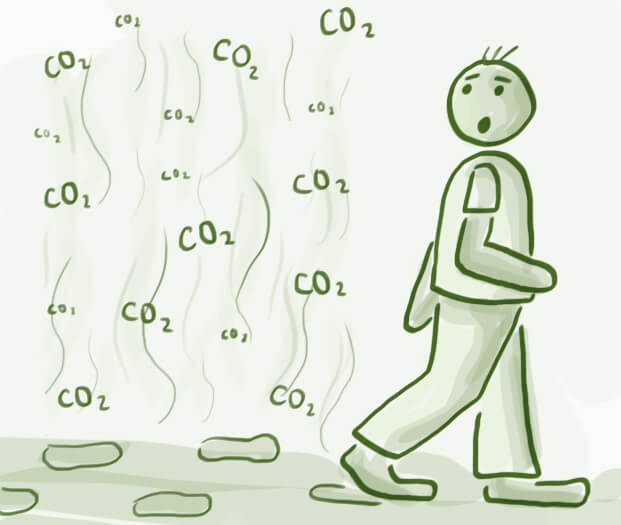Yesterday, I went online to calculate my carbon footprint…just for fun. I tried about four different calculators that varied in terms of thoroughness. Though I’m sure all of my scores were inaccurate since I completely guessed on how many miles I drive in a year and how much I spend on heat/electricity, ALL calculators were missing one component that I feel is a pretty big deal. Clothes, or material purchases in general, really, are completely left out of the equation.
I think it’s really interesting to know how much buying a new shirt, say, or a new pair of shoes, contributes to this “footprint.” There’s a book called Stuff: The Secret Lives of Everyday Things that I once snatched from my brother to read. As the title suggests, the author John Ryan gives a history of many everyday items—how they were created (how the materials they were made with were created), and how they got to the store that you buy them from. So I grabbed the book and looked up the chapters on a t-shirt and shoes and here’s a summary of what Ryan says:
Polyester comes from petroleum. Not only does drilling the oil cause pollution and require a lot of natural resources (for example, to power the equipment used to get the oil out of the earth), but the refining and processing of the oil to make polyester is an industry that contributes to pollution more than nearly any other industry in the U.S.
Consider the weight of the polyester garment. Well, ¼ of its weight’s worth in air pollution is released during creation. 10x its weight in CO2 is released.
Most cotton fields are doused in extremely toxic pesticides, and wind and water spread these to places where they shouldn’t be. 10% of the world’s annual pesticide use is on cotton. The machines used to pick the cotton and make the fabric require fuel/oil.
Many toxic chemicals are used to finish and dye the fabric. With toxic chemicals comes toxic run-off, i.e. pollution.
Shoes are a similar story. The synthetic materials are made from petroleum, coal, and toxic gases (Ethylene). Even leather, a natural material, requires tanning which is normally done with toxic chemicals (vegetable tanning takes too long). Creating and refining these materials generates a lot of pollution and requires a lot of energy.
Packaging requires lots of resources as well (think of all the paper stuffed into those shoes, all the plastic your mail-ordered clothes are wrapped in). In addition, most clothes are imported, requiring fuel powered vehicles.
SO, in conclusion, buying used is always a better choice. Of course, we will all need something occasionally that we’ll end up buying new, but just think of how much less of an impact you’ll have if you have a mostly secondhand wardrobe with a few new essentials (…which you could always get from somewhere like Patagonia. Since you spend less money on used clothes, splurging for a few high-priced items wouldn’t be so bad).
And conclusion #2, someone needs to make a new carbon footprint calculator that factors in this important component. ![]()
I found a neat little interactive carbon footprint tool on edenproject.com. If you click on “wearing a pair of trousers a day,” you can see the impact that things such as manufacturing, washing, and drying have on the environment. It’s pretty interesting, so take a look.






